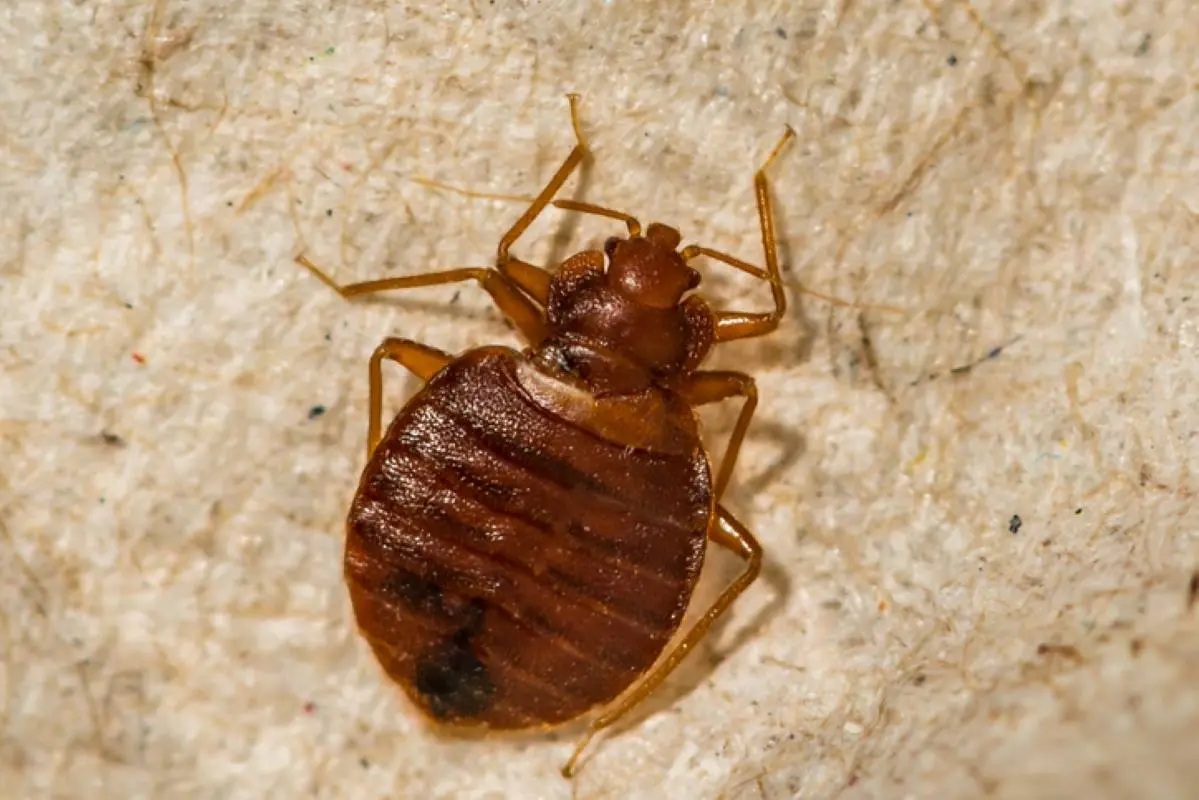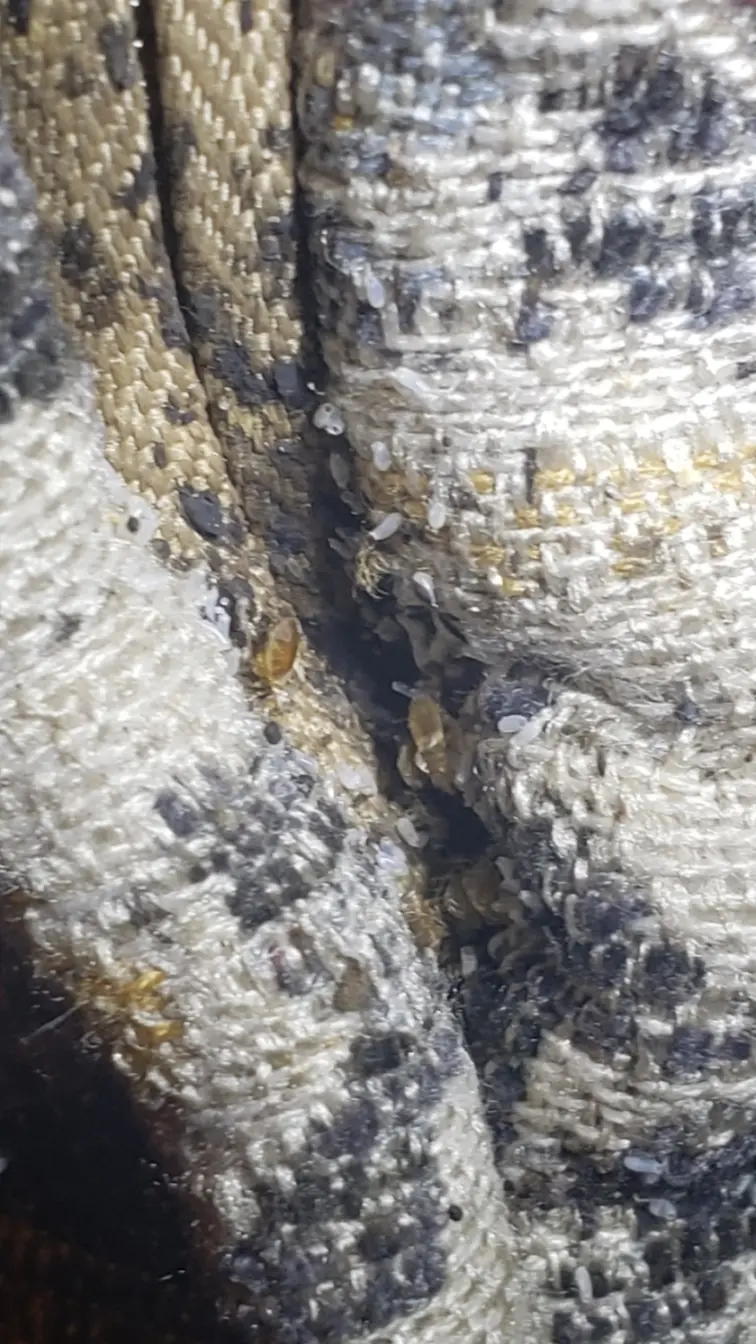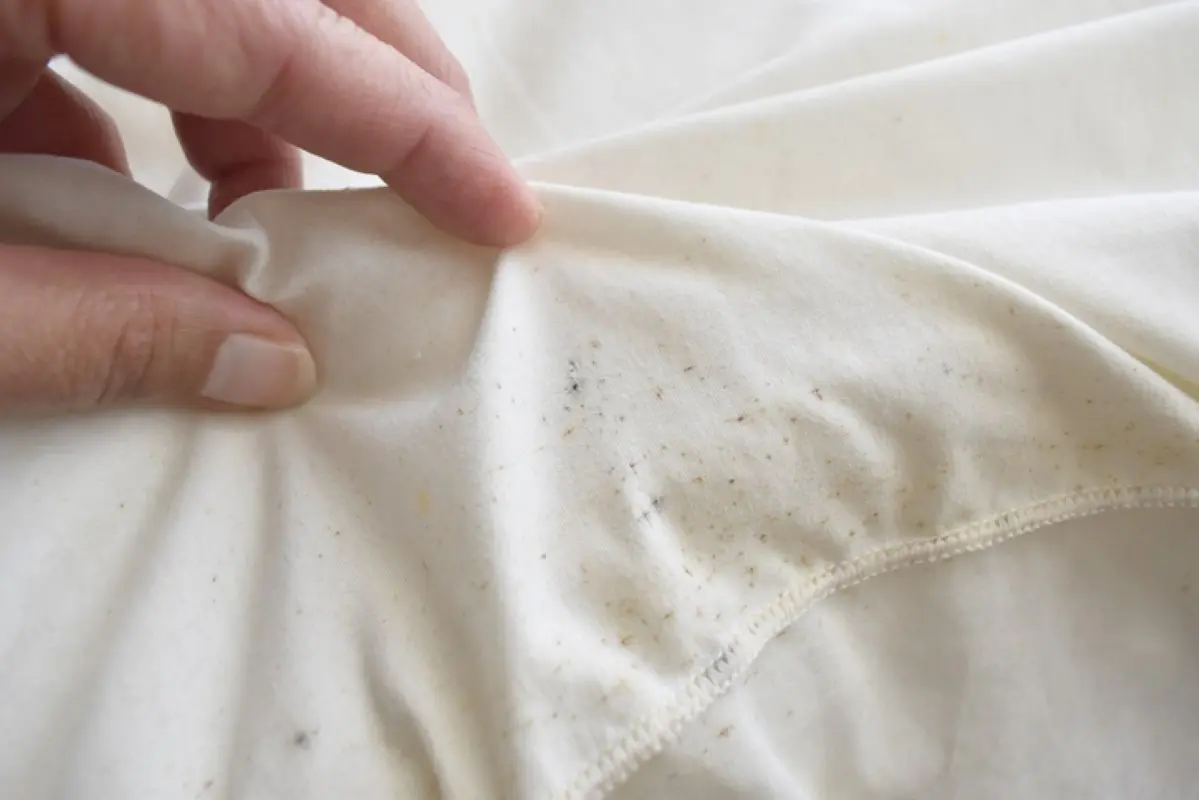Can Bed Bugs Fly?
No, bed bugs can’t fly. They can hitch rides on airplanes or flying creatures like bats (bat bugs). They can also reproduce at a flying rate.

Knowing Bed Bug Behavior
Bed bugs hide near food sources (human blood meals) during the night while their host sleeps. They hitchhike, reproduce through traumatic inception, and survive many months without food.
Bed bugs hitchhike on clothes, people, pets, and objects (books, electronics, etc.) So if you are wondering “will one bedbug cause an infestation?” It depends on if she is pregnant. Can bed bugs fly or jump? No, but they can fall, run, hide, and hitchhike.
In addition to their ability to travel, bed bugs can survive up to a year without food.
When bed bugs reproduce, the male stabs through the female’s abdominal wall to insert his semen. This traumatic process could prove lethal with multiple suitors. Traumatized females dart off to unexpected hiding spots spreading the population.
Do Bed Bugs Crawl Fast?
Yes, they unfortunately do. Typical bed bugs run between 3 and 4 feet per minute covering 100 feet in an hour even with obstacles. What really boosts a bed bug’s speed is their ability to nestle into small crevices like the tread of a shoe and hitch a ride as fast as their host is traveling.
Will One Bed Bug Cause an Infestation?
A lone bed bug needs its reproductive counterpart to reproduce, so it would normally need to be a male and a female bed bug to start an infestation. Since bed bugs can lay 1 to 7 eggs at a time, a single pregnant female could be all that is needed to kick off a full blown infestation.
Signs of a Bed Bug Infestation

The most obvious sign of a bed bug infestation is seeing bed bugs themselves. Adults are the easiest to see and are red to brown colored and the size and shape are comparable to a watermelon seed. Baby bed bugs hatch out of a small oval egg and go through 5 star phases. They feed and molt (shed their exoskeleton) to advance in size in shape toward adult. Bed bug shedding is when exoskeletons are left behind, which is just as much a sign of their presence as a live body.
Bed Bug Eggs, Shedding, and Droppings
Bed bugs lay their small white oval eggs on locations near where they feed. They frequently cement them to mattress seams or porous surfaces like a headboard with a sticky substance. It is also common to have bed bug eggs on sheets. If the eggs match the sheets, it will be hard to see. Frequently wash sheets and dry them on high heat to kill any bed bug eggs lurking on them.
Bed bug droppings resemble flakes of black pepper. They are frequently found in mattress seams or wall seams where they are squeezing in and out of their hiding places.
The collection of hatched eggs, shed exoskeletons (oftentimes called cast skins), and droppings constitute bed bug frass. This frass is a helpful set of signs in inspecting rooms for potential bed bug populations.
Bed Bug Stains on Mattresses and Other Hiding Spots
When bed bugs are fat and happy from a recent blood meal, they are subject to leaving a big stain. If a host rolls over on top of them in a full state, they may pop leaving bed bug stains on mattresses or sheets.

A bed bug nest isn’t a constructed element like a bird nest. Instead, it is a place where bed bugs gather to hide from hosts that would rather squish them than study them. They will clump together to protect each other from predators and uncomfortable temperatures or elements. It is also a handy place to reproduce. Their eggs are typically cemented outside of this congregation area so in terms of an egg nest, it is any porous surface (usually near a host) where the female can hide the eggs.
Have a Bed Bug Problem? Reach Out to Rove Today!
Bed bugs are like mosquitoes of your nightmares. At least a mosquito bites and goes away. The bed bugs intend to stay. Fortunately, Rove Pest Control can make them disappear. A bed bug treatment cost will vary based on the method being used and the size of the area that must be treated. Rove typically treats with a biological product that is a spore that feeds on bed bugs. This treatment starts at $1,188 and can be done as a one time treatment to solve an existing issue or be applied every 3 months to protect places that are high risk for new bed bug populations.
